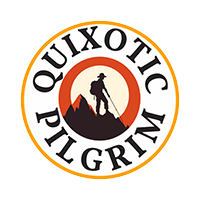You may have heard that Iceland is overrun with tourists, and with 2.2 million visitors to the island of 330,000 people in 2017, you might begin to believe that it’s just not a special destination any longer.
While that’s certainly not true, my enthusiasm about the South Coast of Iceland is not without some reservation, namely the fact that the most common beast you’ll see as you traverse the remarkable black sand beaches, glacial lagoons, and geysers of the South is not the comical puffin or the adorable Arctic fox: it will almost certainly be giant tour buses disgorging 30-50 people at every stop.
It’s undeniable that things have changed in the South of Iceland even since I first visited in 2013. Where you might have found 1-2 buses parked at the Black Sand beaches near Vik six years ago, I actually turned away from the spot because there were at least eight parked there when I arrived yesterday, along with a huge number of cars. In a later post, I’ll give some advice about how to navigate the area and see those excellent spots, but today I want to praise a totally unexpected gem on my trip: the Tröllaskagi Peninsula in the North of Iceland.
In a trip filled with new sights in Iceland, the highlight was Tröllaskagi, a smallish peninsula you’ll travel in a loop from Varmahlíð to Akureyri or the reverse. And what you’ll encounter is an area where I saw no more than a tour bus or two over two days filled with some quirky, lovely communities, incredible mountains and fjords that will take your breath away, a tunnel or two that will leave you gripping the wheel a bit tighter than normal, and incredible farmland filled with Icelandic horses and green, lush valleys.
I journeyed from west to east in my campervan, stopping for the first night in Hofsos, which has to have one of the most picturesque public swimming pools you’ll ever see and an excellent little campground with hot showers and excellent facilities. The town is very small but ringed with farms and plenty of places to take a picture or two.
The next day, I traveled to the top of the peninsula and down its east coast, stopping for a fish and chips meal at a family-owned shop and a surprisingly excellent museum about the Herring era in Siglufjörður, a charming fishing village that seemed quite lively. And there is no excuse for missing Frida Chocolate Cafe.
I also enjoyed brief stops in Ólafsfjörður and Dalvik. One of the things you’ll discover about Iceland is that many of its towns don’t appear to have much to offer visitors other than a plethora of rather expensive places to stay and eat—and some towns are downright unattractive—but these three coastal cities had unique character you won’t always find in Icelandic villages.
And you’ll definitely want to take the brief side trip to Hjalteyri. I didn’t have time to stop for a whale watching tour, but the visual of the village with its couple of dozen houses and its abandoned herring factory was one of the highlights of my whole trip.
Finally, I made my way to Akureyri, which I wasn’t looking forward to. I visited the city one March and found it cold and forbidding, largely, I suspect, because the weather was cold and forbidding that day. On this June day, though, Akureyri showed off its best look, with a really vibrant food scene, some old classics like the Blaa Kannan Cafe and what might still be the northernmost curry house in the world, and the energy of a small town where everyone seemed to be out walking around to enjoy the sun.
If you’re visiting Iceland and not driving the Ring Road, you might consider taking a regional flight from Reykjavik to Akureyri, renting your car there, and exploring the peninsula more thoroughly.
I can’t imagine how a person wouldn’t be in a state of semi-awe looking at the landscape of most of Iceland, but if you want to explore some scenic wonder and visit towns and even a small city that feels inhabited by locals, not visitors, the Tröllaskagi is for you.
Just don’t tell too many people about it, okay?











